Welcome to a comprehensive guide on the best things to do in Mostar, a captivating journey through one of Bosnia and Herzegovina’s most enchanting cities.
Nestled in the Balkans, Mostar may be less frequented by tourists compared to other European historic cities. Yet, it offers a diversity and charm that can leave any visitor in awe.
Central to Mostar’s rich narrative is the iconic Stari Most, or ‘Old Bridge,’ a symbol deeply rooted in the city’s history as the namesake ‘bridge-keeper.’
This guide not only highlights the top activities in Mostar but also delves into fascinating facts and poignant insights about its history and the impact of war. It is a must-read for anyone eager to explore the depths of Mostar’s historical and cultural landscape.
Skip Ahead To My Advice Here!
Top Things To Do In Mostar, Bosnia & Herzegovina
Mostar, located in southern Herzegovina, is perfect for a day trip from Croatian cities like Split and Dubrovnik. However, it’s worth considering a longer stay.
By spending a few days in Mostar, you not only avoid the midday rush of day-trippers in the Old Town, but you also get to experience its quieter, more relaxed side in the mornings and evenings.
The city has a different vibe once the day visitors leave – it’s peaceful and gives you the chance to explore beyond the usual spots like the Old Town and the bridge. Plus, staying overnight in Mostar lets you see the city light up at night, which is pretty special. So, think about booking a couple of nights in a local hotel or guesthouse.
It gives you a chance to really soak in the atmosphere and maybe discover some hidden gems that aren’t on the typical tourist trail.
Old Bridge, Stari Most
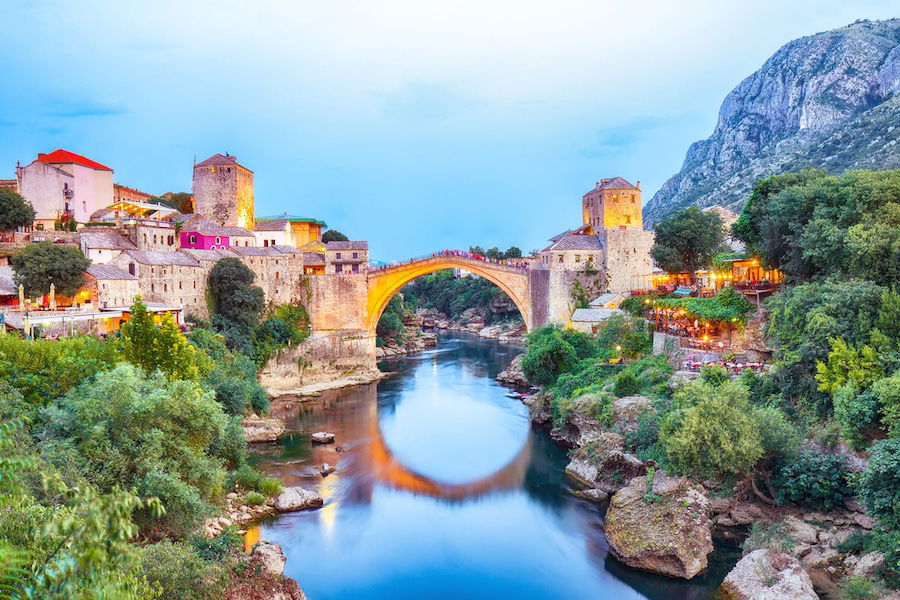
Kick off your visit to Mostar with the city’s main attraction, the Stari Most Old Bridge. It’s a good idea to swing by the visitor center on the western side of the Neretva River first to grab a map of the Old Town.
The Stari Most isn’t just a bridge; it’s a masterpiece of Ottoman architecture, showcasing an elegant, single-pointed arch design. This architectural style is not only visually striking but also a testament to the ingenuity of its 16th-century builders. The bridge connects two vibrant parts of the city, symbolizing the meeting of cultures and history.
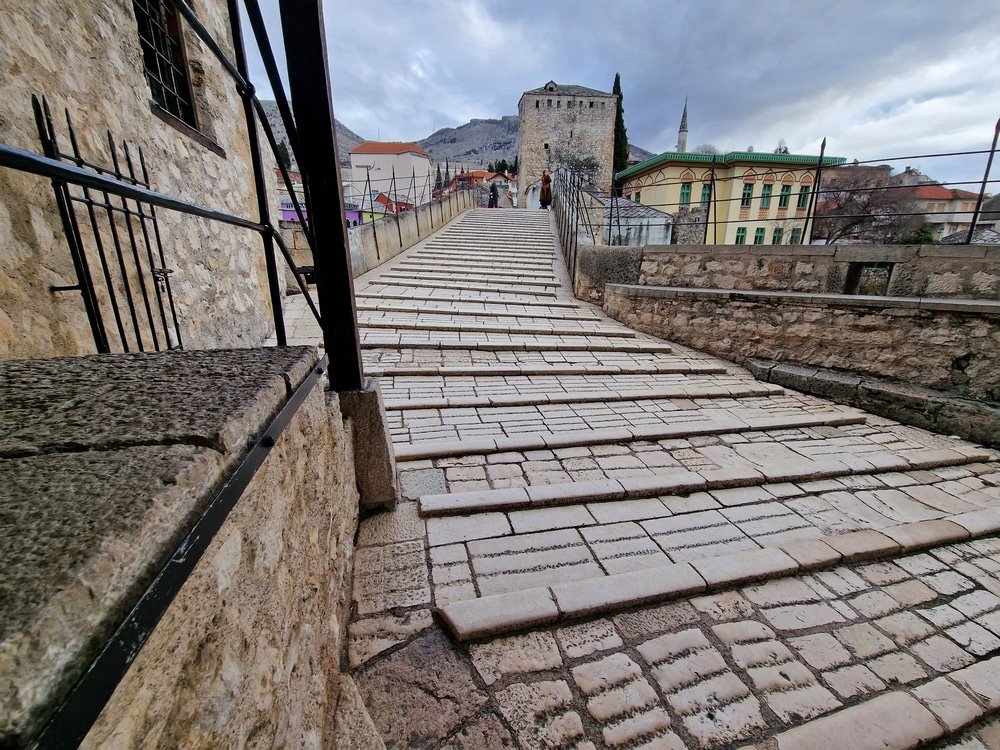
Take your time here. Watch locals dive off the bridge in a breathtaking display of courage and skill—a tradition that’s as old as the bridge itself.
The views from the western riverbank and the Lučki Bridge to the south are incredible. Just experiencing the Stari Most is a reason enough to visit Mostar. It’s not only an iconic structure in the Balkans but also a living piece of history that you can walk over, touch, and admire up close.
Visit The Bazaars

After soaking in the splendor of the Stari Most, dive deeper into Mostar’s charm by exploring its lively bazaars. Just a short walk across the bridge, Coppersmith’s Street, or Kujundžiluk, awaits.
This cobblestone-lined street bursts with color and life, offering a shopping experience reminiscent of Turkish markets. Here, you can find everything from handcrafted jewelry and oriental rugs to unique Balkan war memorabilia and intricate copper crafts, as well as many souvenir shops.
Strolling down this street is more than just shopping; it’s a cultural experience. As you meander, don’t forget to catch glimpses of the Mostar Bridge, beautifully framing your journey through this vibrant marketplace.
Koski Mehmed Pasa Mosque
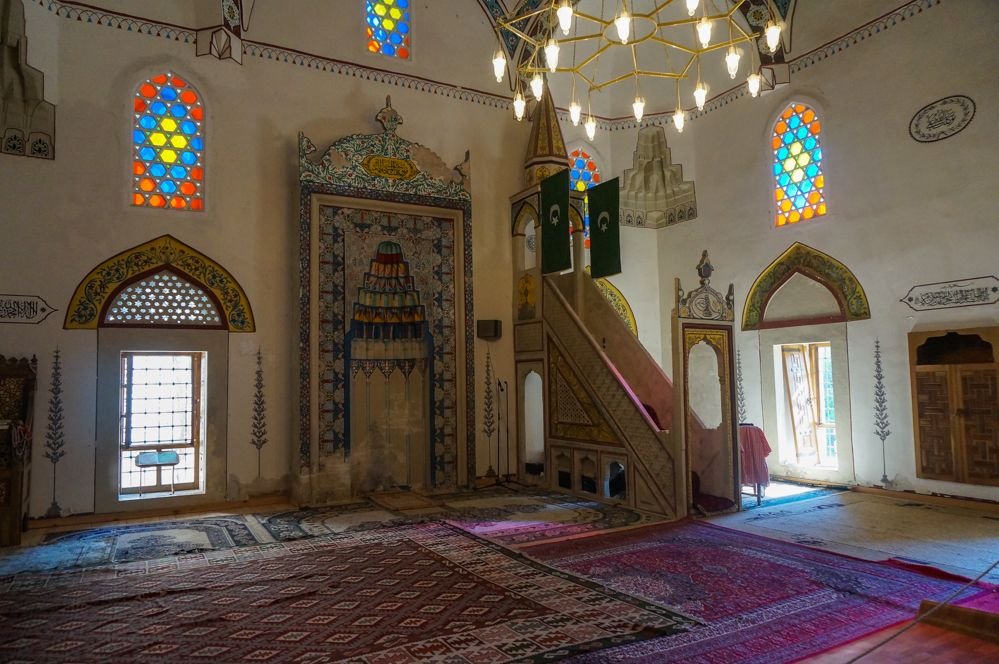
A little further up Coppersmith’s Street, you’ll find the Koski Mehmed Pasha Mosque, a gateway to understanding Bosnia-Herzegovina’s rich Muslim heritage.
This beautiful mosque, dating back to the 1600s, is not just a religious site; it’s a historical treasure set against a stunning riverside backdrop. Visiting this mosque is more than just ticking off a tourist spot; it’s a journey into the heart of Mostar’s cultural mosaic.
Don’t miss the opportunity to climb to the top of the mosque’s minaret. The climb might be steep, but the reward at the top is a breathtaking, panoramic views of Mostar, dominated by the majestic Stari Most – arguably the best view in the city.
Try Bosnian Coffee
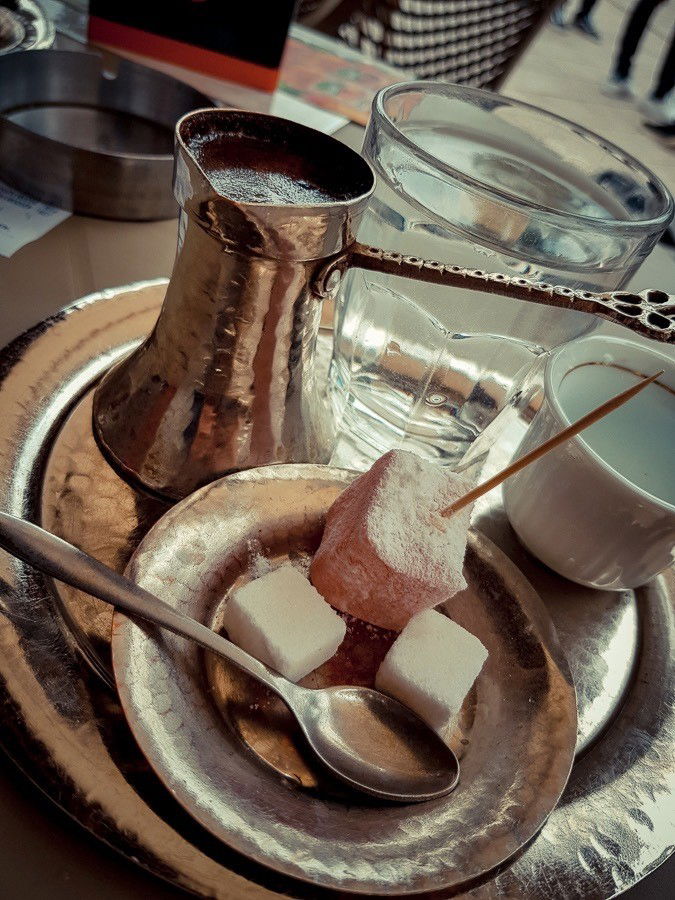
After exploring the iconic Old Bridge, bustling bazaars, and serene mosques of Mostar, it’s time for a well-deserved break. Dive into the local scene by grabbing a cup of traditional Bosnian coffee. Mostar’s café culture is vibrant, with numerous coffee shops dotting the cityscape, offering a perfect blend of relaxation and local flavor.
A top spot for tourists and locals alike is Braće Fejića Boulevard, an extension north of the lively Coppersmith’s Street. This boulevard is a hub for great food and drinks, providing a delightful escape from the main tourist paths. It’s an ideal place to unwind, sip on authentic Bosnian coffee, and maybe strike up a conversation with the locals.
Muslibegović House
When in Mostar, don’t miss the chance to visit the Muslibegovic House, often hailed as the city’s finest museum. This house is not just a museum; it’s a national monument and a shining example of residential Ottoman architecture.
Once the residence of the affluent Muslibegović family back in the 18th century, it now opens its doors to the public, allowing a unique peek into the past.
Inside, you’ll find a rich collection of historical artifacts ranging from exquisitely written books in Turkish, Persian, and Arabic to authentic hammam sets, vintage purses, and medals.
The rooms, adorned with period furniture like plush sofas and ornate shelves and decorated ceilings and mirrors, offer a vivid glimpse into the lifestyle of a bygone era.
Adding to its allure, part of this heritage building now operates as a hotel. Staying at the Muslibegović House Hotel is a splurge, but it’s a once-in-a-lifetime experience to sleep within walls that echo centuries of history.
Biscevic House
If you’re wandering around Mostar and fancy a trip back in time to the Ottoman era, head over to the Bišćević House. This isn’t just an old building; it’s a well-preserved Ottoman house that gives you a real sense of what life was like back in the 17th century. Right in the heart of Mostar’s Old Town, this place stands out with its traditional architecture and a charming courtyard that feels like a little oasis.
Inside, you’ll find rooms decked out with authentic furniture and artifacts from the Ottoman period. It’s like walking into a living history book. The cool thing about the Bišćević House is that tourists do not overrun it, so you can take your time exploring without the crowds.
Plus, the folks there are super friendly and happy to share stories about the house’s past. It’s a nice, quiet spot to take a break from the busier tourist paths and really soak in some genuine Bosnian history. Definitely add this to your Mostar itinerary if you’re keen on getting a closer look at the city’s cultural roots.
Mostar War Photo Exhibition
A visit to Mostar isn’t complete without acknowledging its poignant history, particularly the impact of the Balkan War. While you can certainly enjoy the city’s modern attractions, embracing its historical depth truly enriches your experience.
A must-visit is the Mostar War Photo Exhibition. Located just above the Mostar Diving Club, near the iconic Stari Most, this exhibition offers a profoundly moving experience. It features a collection of 50 striking photographs taken by a young photojournalist during the war. These images capture the reality of the conflict, conveying powerful emotions and stories that are sure to leave a lasting impression.
This exhibition isn’t just about looking at photographs; it’s an opportunity to connect with Mostar’s past, understand the resilience of its people, and appreciate the peace and beauty you see in the city today. It’s a reminder of the importance of history in shaping the places we visit and enjoy.
Kriva Cuprija – The Crooked Bridge
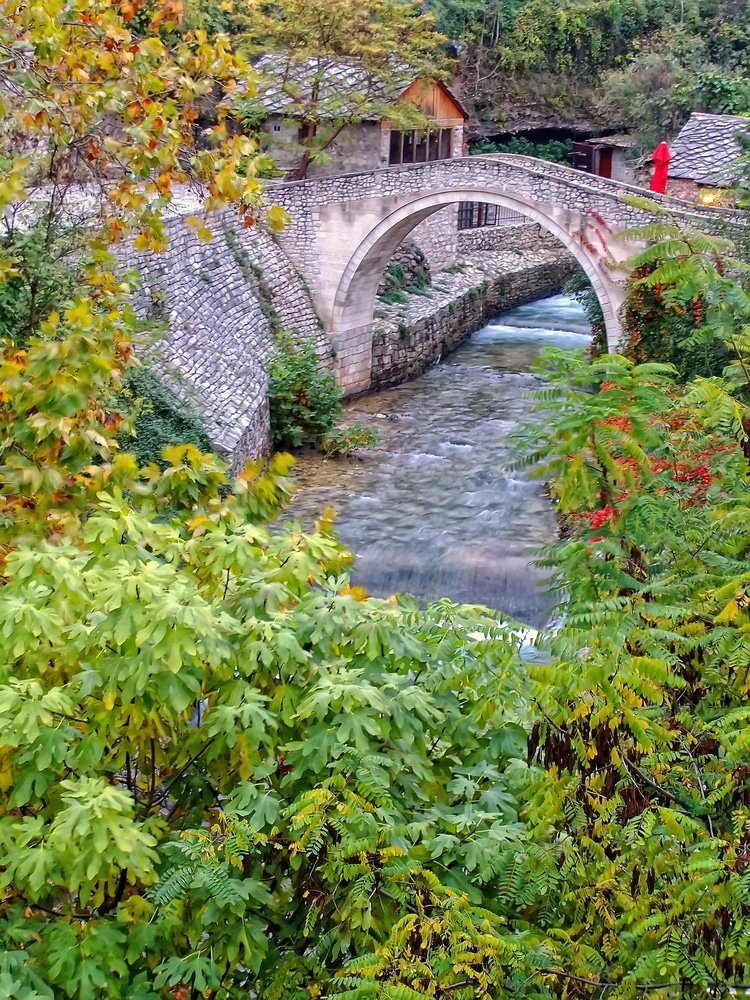
While the Stari Most often steals the spotlight, Mostar’s Kriva Cuprija, or The Crooked Bridge, deserves its own share of admiration. This charming, lesser-known bridge might be overshadowed by its famous sibling, but it holds its unique allure.
Interestingly, it’s not just another bridge; it’s older than the Stari Most by eight years and is believed to have been a prototype for the more architecturally complex Stari Most.
The Crooked Bridge arches gracefully over the Radobolja River, right where it merges with the Neretva River. Just a stone’s throw away from the Stari Most, this bridge is nestled in a quaint area lined with restaurants.
A visit here offers a quieter, more intimate experience compared to the bustle around Stari Most. It’s a perfect spot to enjoy the serene beauty of Mostar’s rivers and an excellent opportunity to capture some unique photos away from the crowds.
Sniper Tower
In the heart of Mostar lies a unique and haunting piece of its history, the Sniper Tower. A once former bank, this towering structure gained infamy during the Bosnian War when it served as a snipers’ outpost. Today, it stands as a striking symbol of resilience and transformation.
Covered in vibrant graffiti and bearing the scars of its wartime past in the form of bullet holes, the Sniper Tower offers visitors a chance to delve into Mostar’s recent history. It’s a place where art meets conflict, and exploring its walls feels like navigating a visual narrative of the city’s endurance.
This intriguing site is a must-visit for those curious about Mostar’s past and its vibrant street art scene, providing a powerful and unforgettable experience.
Visit A Dervish Monastery In Blagaj
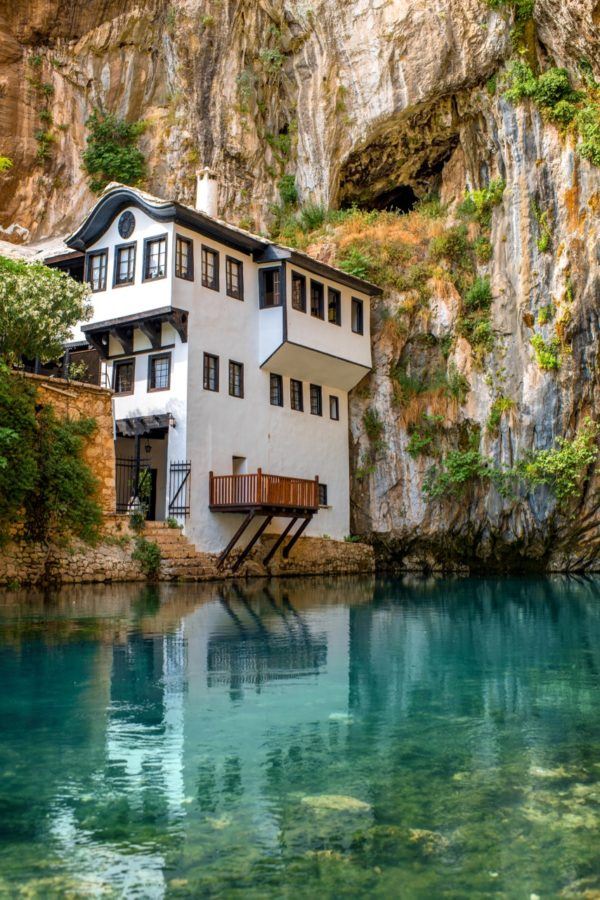
When you’re in Mostar, make sure to set aside a day for an excursion to Blagaj, a scenic village just a 15-20 minute drive southeast of the city. Blagaj isn’t just any village; it’s home to the Blagaj Tekija, one of Bosnia and Herzegovina’s most breathtaking sights.
This Dervish Monastery, dating back to the 16th century, is a marvel of history and architecture. Tucked at the base of a dramatic rock wall and beside the karst spring of the Bruna River, its setting couldn’t be more picturesque. The azure waters of the river pool beside the monastery create a scene that seems straight out of a postcard.
What’s more, the Tekija, a stunning example of Ottoman architecture, now includes a restaurant with views over the water. Imagine enjoying a leisurely lunch here, surrounded by such natural beauty and historical significance. It’s a tranquil retreat that offers a complete contrast to the bustling streets of Mostar and is a must-visit for anyone wanting to experience the serene side of Bosnian culture.
Day Trip To Historic Pocitelj
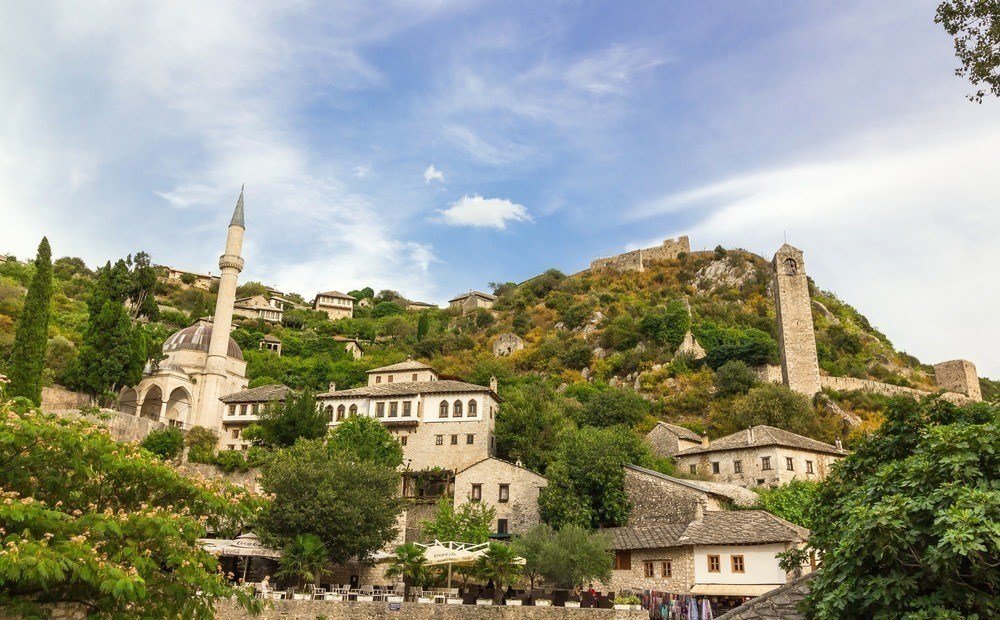
If you are on a Balkans road trip and have a car, then take a 30-minute drive south of Mostar to the beautiful historic village of Pocitelj. It was built in a natural amphitheater in the high hills on the Neretva River banks, and it used to be strategically important. Now, it’s a quiet Bosnian village located on the way from the Dalmatian coast to Mostar and thriving on the Mostar tourism boom.
The entire village consists of stone buildings and constructions, including fortified walls, a fort, a bell tower, and a mosque. It’s great fun to wander its cobblestone streets and stairways, enjoying the architecture and atmosphere. Climb the octagonal-shaped tower on top of the hill for magnificent views of the town and Neretva River valley.
(Both Pocitelj and Blagaj are, by the way, popular stops on guided bus tours from Dubrovnik.)
Brands We Use And Trust
History Of Mostar & Interesting Facts
Peace And Turbulence (And Peace Again)
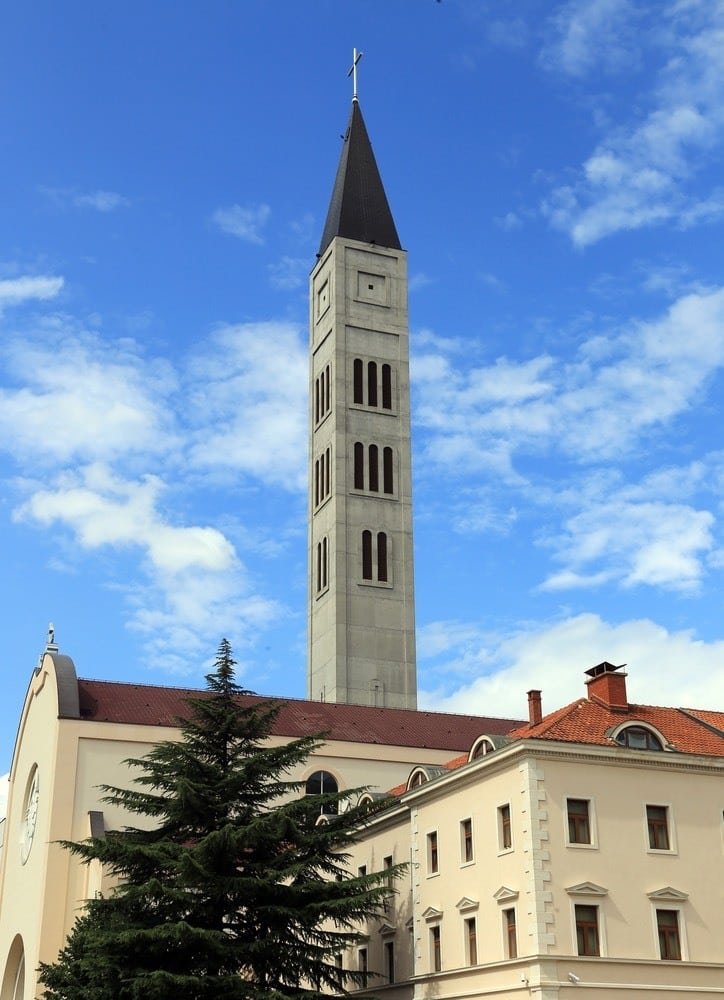
Situated in the country’s far south, Mostar represents both the best and worst of former Yugoslavia. Especially during the years under Tito, the residents of Mostar lived together in perfect peace and harmony. That mix of various cultures—Muslim Bosniaks, Orthodox Serbs, and Catholic Croats—was virtually unseen elsewhere in Europe.
Then, at the beginning of the 1990s, Yugoslavia (a collection of different nationalities) collapsed, dragging its people into one of the most vicious civil wars in modern European history. With its three distinctly different cultures, Mostar became stuck in a horrific three-way war.
Nowadays, the Balkan war is, of course, long over. One of the least-known Bosnia facts nowadays is that the country is now completely safe for tourists. “Is it safe to go to Bosnia?” is a question that hasn’t been relevant for about two decades… Yet, that said, Mostar still bears the scars of those years, many of its buildings still showing bullet holes, some even remaining destroyed.
A Mix Of Cultures And Heritage
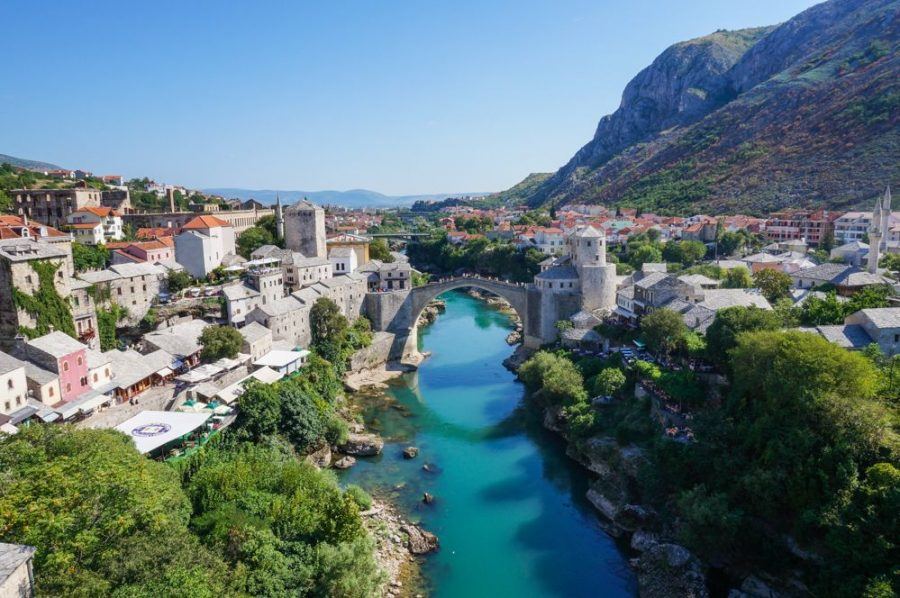
That said, however, Mostar today is a gorgeous city. It’s as close as you can get to Muslim culture anywhere in Europe. In fact, many Western visitors are often surprised by the number of mosques in the city of Mostar. Historically a crossroads of cultures—Christian Europe and Muslim Middle East—Mostar is still a vibrant mix of influences.
Turkish-style bazaars line polished cobbled streets, while church spires and minarets contribute to the city’s skyline. Mostar hardly feels “European” at all. In terms of atmosphere and ambiance, it’s as far away from Paris or even Venice as Istanbul is. In fact, sometimes, when strolling the streets of the beautiful Old Town, you’d swear you were in Turkey. It’s one of the most fascinating places to go to in Bosnia, even in Europe.
Also, Mostar is as safe as any other similar-sized city in Europe. The most significant danger is pickpockets, and you’re not advised to explore the ruined buildings in the city.
UNESCO World Heritage Site In Mostar, Bosnia And Herzegovina
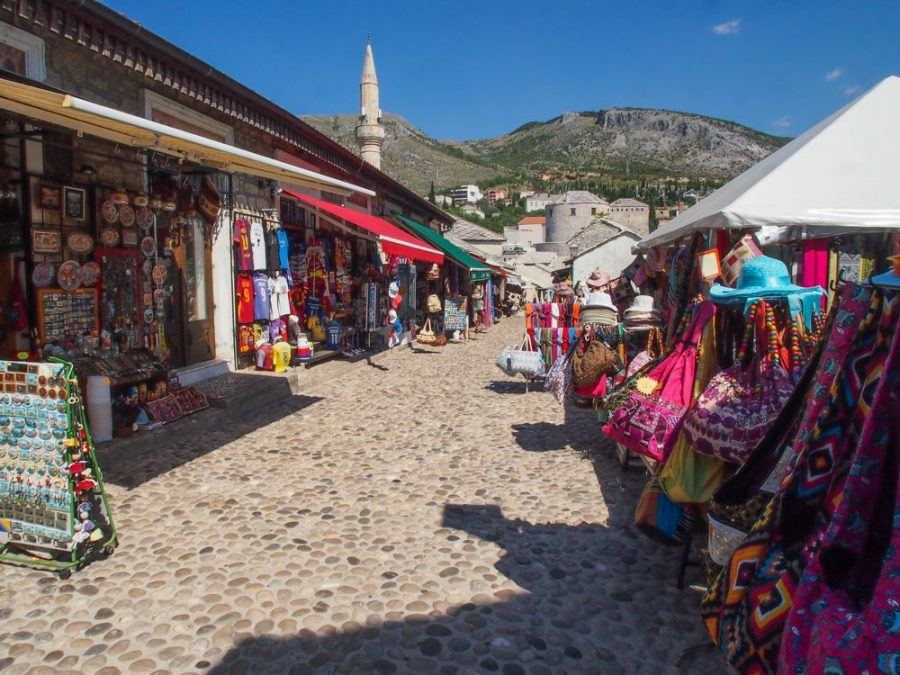
Besides a fascinating history and a mix of different cultures, Mostar is also blessed with a truly magnificent setting. Surrounded by rocky mountains, the Neretva River, one of the most scenic rivers in the Balkan, bisects the city.
Most touristic Mostar attractions are in the Bosniak area of the city, which encompasses the Old Town. It divides it into two parts—the Catholic Croat western side of the river and the Muslim Bosniak eastern side of the river. Several bridges link those two communities together. Of course, the most notable one of those is the iconic Old Bridge or Stari Most.
The Mostar Bridge has connected the banks of the Neretva River since the Middle Ages. Formerly the symbol of harmonious coexistence between various cultures, the Stari Most was destroyed during the Bosnian War. That Stari Most destruction was an event that upset historians and locals alike.
Now, the iconic Stari Most bridge has been rebuilt and is as attractive as ever. These days, the old Mostar bridge is world-famous and gorgeous, even if you’re unaware of its history. It’s without question the most famous bridge in Bosnia. The Mostar most and the surrounding historic area has been declared World Heritage by UNESCO, attesting to their significant cultural and historical importance.
How To Get To Mostar From Dubrovnik & Split
There are several modes of transport to get to Mostar from Dubrovnik or split:
Travel From Dubrovnik To Mostar
Private Transfer From Dubrovnik To Mostar
Suppose you are like me and prefer to have someone take care of all the navigating and stress of driving in a foreign country, then a private transfer is your best bet. Prices start at 175 euros one way or 230 euros for a day trip per vehicle, so you can travel in style with the flexibility that comes with a private transfer.
Dubrovnik To Mostar By Car
The Mostar to Dubrovnik journey is about 2.5 hours, and there are three driving routes between Dubrovnik and Mostar.
- From Dubrovnik via Tribinje, Stolac, and Buna to Mostar by M6 and M18roads.
- From Dubrovnik via Metković to Mostar via M6 and D8 routes
- From Dubrovnik via Tribinje, Bileca, Stolac, and Buna to Mostar by R427 and M20. This route is the longest.
Dubrovnik To Mostar By Bus
The Dubrovnik to Mostar bus takes between 3 and 3.5 hours* to reach Mostar. At least three daily buses are serving this route, with a one-way ticket costing 15 euros. Outside of peak season, there’s rarely a need for advance bus reservations, although if you are in Dubrovnik anyway, you may as well buy your ticket early to guarantee your seat.
Local Tip: If you take the bus from Dubrovnik to Mostar, grab a seat on the bus’s left side to see the spectacular landscape of Croatia and Southern Bosnia. When you travel from Mostar to Dubrovnik by bus, sit on the bus’s right side for the same impressive view.
Travel From Split To Mostar
Private Transfer From Split To Mostar
You’ll be picked up at your Split accommodation in a modern, well-equipped vehicle, whisked away on your 2 hours & 30-minute journey through the Croatian and Bosnian countryside to Mostar from Split, and have not a worry in the world. All you have to do is sit back and enjoy the ride.
Split To Mostar By Car
The Split to Mostar journey is about 2.5 hours, and most of the trip is along the A1 freeway, making it a reasonably easy drive. You will need to check with your car rental company about your insurance coverage.
Split To Mostar By Bus
If you are budget-conscious, then taking the bus is your best option. Several buses run daily from Split bus terminal to the Mostar bus station, and tickets start from 16 euro one way. While the bus is by far the cheapest option, it’s also the most inconvenient, with the journey taking 3.5-4 hours. Also, you are at the mercy of the limited number of bus services to Mostar, so be sure not to be late; otherwise, you may end up spending the night in Mostar.
*Important: You will have to go through passport control before reaching Mostar from Split and Dubrovnik, so make sure not to forget your passport at home or in the hotel – even if you plan to come back on the same day. Crossing this border can be unpredictable, so that travel times can vary significantly, especially in the summer months.
In conclusion, this sightseeing guide, Bosnia and Herzegovina’s Mostar, stands as a testament to its rich history and cultural diversity. The best time to visit is spring or early fall when the weather is pleasant and the old bazaar buzzes with life.
Wandering through the picturesque Old Town is a journey back in time, and it’s undoubtedly worth visiting. For the best views, head to Stari Most, where the blend of natural beauty and architectural marvels offers an unforgettable experience. Mostar, a jewel in the Balkans, awaits to mesmerize you with its unique charm.


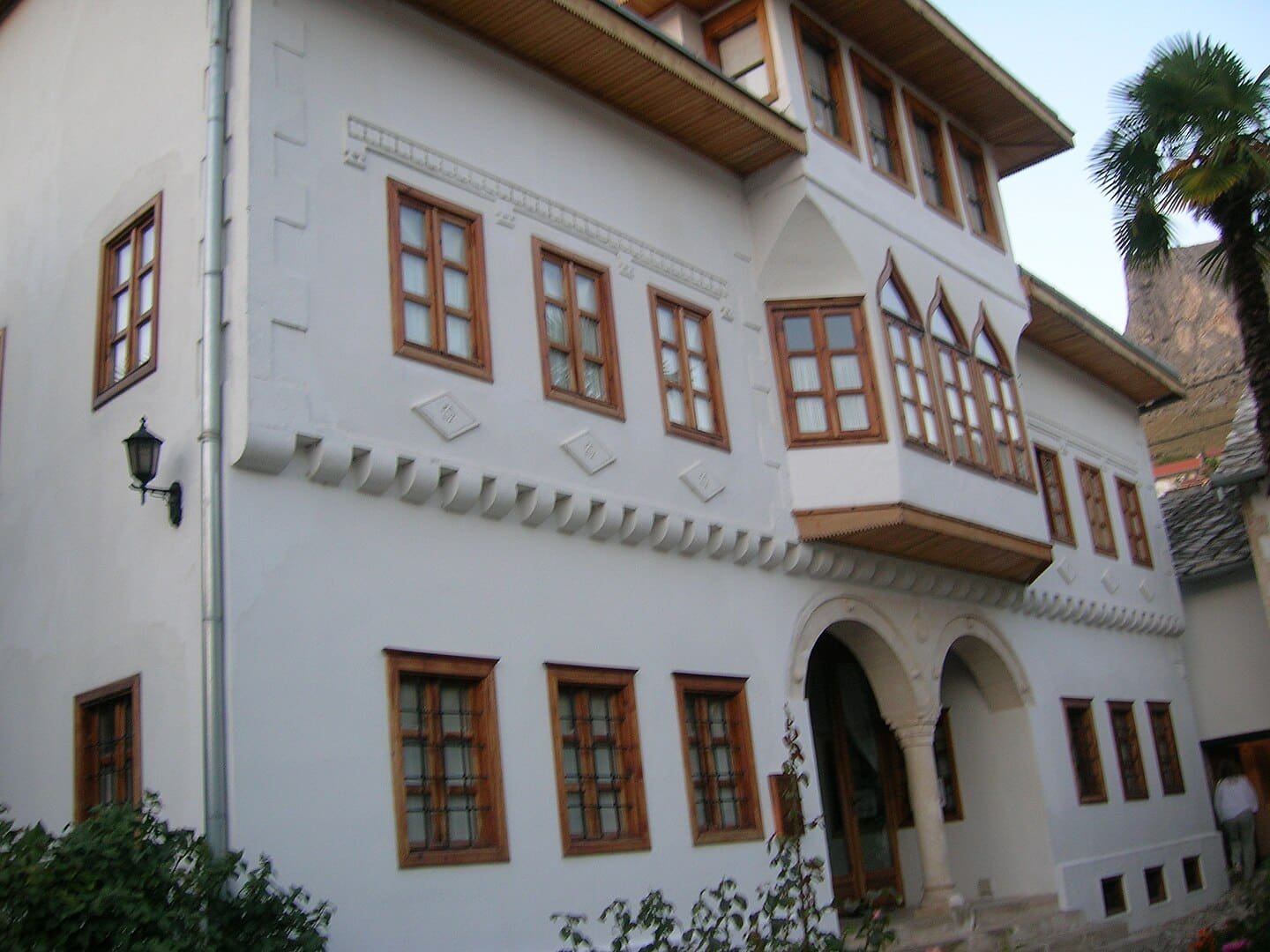

Eating potato pita?
Good work thanks for sharing
thank you for sharing this entire article, someday I will come here and experience